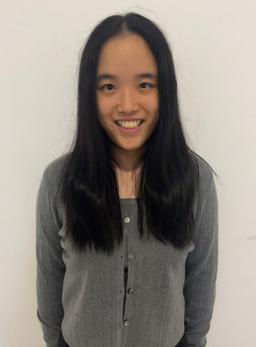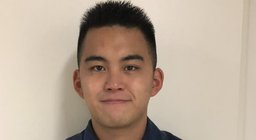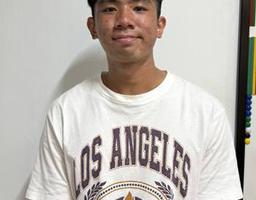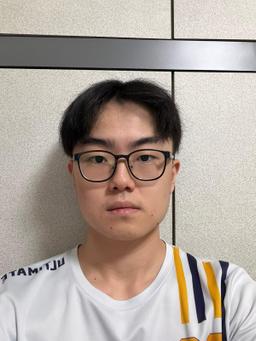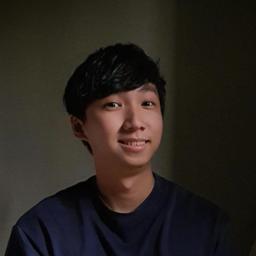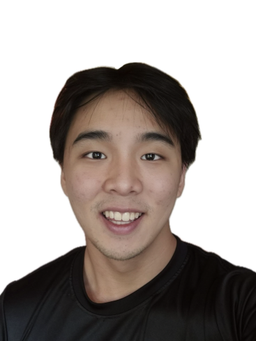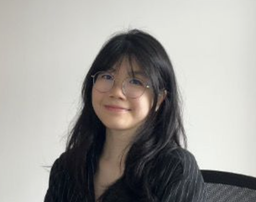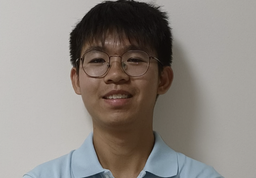The Parent's Guide to Sec 1 Subject Combinations (And How It Affects O-Level Maths & Science)
- Understand how Sec 1 grades determine O-Level subject eligibility
- Navigate the new Subject-Based Banding system with confidence
- Secure your child's pathway to JC and university options
Your child has their PSLE results and a secondary school posting. The relief is palpable—no more tuition marathons, no more examination anxiety. It's tempting to think both you and your child can finally breathe easy for a year.
Here's the uncomfortable truth: this mindset is one of the most costly mistakes Singapore parents make.
While many families treat Sec 1 as a "honeymoon year," the reality is starkly different. The critical choices that determine your child's O-Level pathway—taking Additional Mathematics, qualifying for Pure Sciences, and ultimately accessing top JC programmes—are not made in Sec 3. They are earned through performance in Sec 1 and Sec 2.
This parent's guide to Sec 1 subject combinations reveals exactly how your child's early secondary school performance directly impacts their O-Level Maths and Science options, and consequently, their future academic and career pathways.
Understanding Singapore's "New" Sec 1: Full Subject-Based Banding Explained
The secondary school landscape your child enters today looks dramatically different from what you might remember. The traditional Express, Normal (Academic), and Normal (Technical) streams have been replaced by a more flexible system called Full Subject-Based Banding (SBB).

According to MOE's latest curriculum framework, students now attend mixed-form classes where they can take subjects at different difficulty levels based on their strengths. This represents a fundamental shift in how Singapore approaches secondary education.
Decoding G1, G2, and G3 Subject Levels
Under the new system, subjects are offered at three distinct levels:
G1 (General 1): Mapped from the former N(T) standard, focusing on foundational skills and practical applications
G2 (General 2): Equivalent to the former N(A) standard, providing intermediate academic rigor
G3 (General 3): Aligned with the former Express standard, offering the highest academic challenge
Based on your child's PSLE performance, they receive a subject combination that might look like: G3 Mathematics and Science, G2 English and Mother Tongue, G1 Humanities. This flexibility allows students to be appropriately challenged in their stronger subjects while receiving support in areas where they need it.
💡 Pro Tip: For parents with JC aspirations for their children, the goal is clear—your child should be taking G3 Mathematics and G3 Science, or working toward qualifying for these levels.
The Hidden Significance of G3 Subjects
Here's what many parents don't realize: G3 subjects in Sec 1 and Sec 2 serve as gatekeepers for advanced O-Level subjects. Students who excel in G3 Mathematics become eligible for Additional Mathematics. Those who perform well in G3 Science can pursue Pure Sciences instead of Combined Science.
These aren't just academic distinctions—they're pathway determiners that influence JC eligibility, university course options, and career trajectories.
The First Academic Hurdle: PSLE Science vs. Sec 1 Science
Many confident students who sailed through PSLE Science encounter their first significant academic challenge in Sec 1 Science. Understanding why this transition is so jarring helps parents provide appropriate support.
The Fundamental Difference in Approach
PSLE Science operates on an integrated, thematic approach. Students learn about "Cycles" (covering water cycle, life cycles, rock cycle) or "Energy" (encompassing different energy forms across physics, chemistry, and biology contexts). The content is broad but relatively shallow, emphasizing memorization and basic application.
Sec 1 G3 Science introduces students to three distinct scientific disciplines for the first time:
Chemistry: Abstract concepts like atomic structure, elements, compounds, and chemical bonding. Students must visualize particles they cannot see and understand how they interact.
Physics: Mathematical applications involving forces, measurement accuracy, density calculations, and energy transformations. This requires strong numerical skills and logical reasoning.
Biology: Heavy terminology load covering cell structure, human organ systems, and life processes. Students encounter scientific vocabulary that requires precise understanding.

New Skills That Catch Students Off-Guard
Beyond content complexity, Sec 1 Science introduces practical skills that many students haven't developed:
Laboratory Report Writing: Students must document observations, analyze data, and draw conclusions using scientific language and format conventions.
Equipment Handling: Proper use of measuring instruments, safety protocols, and experimental procedures become essential skills.
Scientific Method Application: Forming hypotheses, identifying variables, and designing controlled experiments require higher-order thinking skills.
Research from the Singapore Examinations and Assessment Board indicates that students who struggle with these practical components in Sec 1 often find it challenging to qualify for Pure Science subjects later.
The University Gateway: Why A-Maths is Non-Negotiable
Additional Mathematics represents one of the most critical O-Level subject decisions, yet many parents underestimate its long-term significance. Let's examine why A-Maths has become virtually mandatory for academically ambitious students.
Understanding A-Maths and Its Prerequisites
Additional Mathematics is an optional O-Level subject that students typically begin in Sec 3. It covers advanced topics like trigonometry, calculus, coordinate geometry, and logarithms—concepts that form the foundation for JC-level mathematics.
However, schools don't offer A-Maths to everyone. Students must demonstrate strong performance in G3 Mathematics during Sec 1 and Sec 2, typically achieving B4 or better grades consistently.
The Domino Effect of A-Maths Eligibility
Here's the pathway chain that many parents don't realize exists:
Sec 1-2 G3 Math Performance → A-Maths Eligibility → H2 Mathematics Access → University Course Options
Without A-Maths, students cannot take H2 Mathematics in JC. Without H2 Mathematics, they're excluded from:
- Engineering courses at NTU and NUS
- Computer Science and Information Systems programmes
- Economics and Business degrees
- All Physical Sciences (Physics, Chemistry, Mathematics)
- Actuarial Science and Statistics programmes
- Medicine and Dentistry (which require H2 Chemistry and Physics, both needing strong math backgrounds)
For polytechnic-bound students, A-Maths provides significant advantages in securing places in competitive Engineering and IT diploma programmes.
💡 Pro Tip: A student scoring C5 or C6 in Sec 1 G3 Mathematics is already at risk of being disqualified from A-Maths eligibility. They're potentially closing university doors at age 13 without realizing it.
The Mathematics Progression Trap
Many parents assume that "average" mathematics performance in Sec 1 can be improved later. While academic improvement is certainly possible, the systemic challenge lies in subject eligibility windows. Schools make A-Maths offers based on demonstrated capability, not potential improvement.
Students who miss the A-Maths opportunity face limited options for strengthening their mathematical foundation before university applications. This creates a significant disadvantage in competitive course selections.
The Science Streaming Decision: Pure vs. Combined Sciences
Science subject choices at O-Level create another critical branching point in your child's academic journey. The distinction between Pure Sciences and Combined Science extends far beyond O-Level grades—it determines JC subject accessibility and university course eligibility.
Understanding the Science Pathways
In Sec 3, students are streamed into one of two science pathways:
Pure Sciences (Triple or Double Science): Students take Physics, Chemistry, and/or Biology as separate, in-depth O-Level subjects. Each science receives dedicated curriculum time and covers advanced concepts in significant detail.
Combined Science: Students study two sciences (typically Physics/Chemistry or Chemistry/Biology) as a single O-Level subject. The content is broader but less detailed, designed to provide general scientific literacy rather than specialist knowledge.

Why Pure Science Matters for Future Options
The JC system requires specific O-Level prerequisites for H2 science subjects:
- H2 Physics requires O-Level Pure Physics
- H2 Chemistry requires O-Level Pure Chemistry
- H2 Biology requires O-Level Pure Biology
Without these H2 science subjects, students cannot access:
Medicine and Dentistry: Require H2 Chemistry and H2 Biology (some programmes also require H2 Physics)
Engineering: Requires H2 Physics and H2 Mathematics
Life Sciences and Biomedical Sciences: Require H2 Biology and H2 Chemistry
Physical Sciences: Require relevant H2 science subjects
The Sec 1 Science Performance Gateway
Just as A-Maths eligibility depends on early mathematics performance, Pure Science qualification requires strong G3 Science results in Sec 1 and Sec 2. Schools typically require B4 or better performance to offer Pure Science options.
Students who struggle with the conceptual challenges of Sec 1 Science—particularly the abstract thinking required for Chemistry and the mathematical applications in Physics—often find themselves tracked toward Combined Science. While this isn't necessarily limiting for all career paths, it significantly restricts options in science-related fields.
The Combined Science Limitation
Students who take Combined Science at O-Level face several constraints:
- Limited H2 Science Access: They may be restricted to H1 science subjects in JC, which limits university course eligibility
- Reduced Scientific Depth: Combined Science covers topics more broadly, potentially leaving gaps in understanding that become problematic in advanced courses
- Competitive Disadvantage: For university applications in science-related fields, Pure Science students typically have stronger preparation and more impressive academic profiles
📚 Key Insight: Students don't choose between Pure and Combined Science in isolation. Their Sec 1 and Sec 2 performance in G3 Science determines which pathway becomes available to them.
Strategic Academic Planning: What Parents Must Know
Understanding the system is only the first step. Effective academic planning requires recognizing the interconnected nature of subject progressions and taking proactive steps to keep options open.
The Cumulative Effect of Early Performance
Academic pathways in Singapore's education system are cumulative rather than independent. Each level builds on previous performance:
PSLE Results → Initial G-Level Subject Placement → Sec 1-2 Performance → O-Level Subject Eligibility → JC Programme Access → University Course Options
Parents who focus only on immediate grades without understanding these connections may find their children facing limited options later, despite having "acceptable" academic performance.
Common Misconceptions That Hurt Students
Misconception 1: "Sec 1 grades don't matter for O-Levels"
Reality: Sec 1 performance determines O-Level subject eligibility, which is often more important than the actual grades achieved.
Misconception 2: "We can always improve grades later"
Reality: While grade improvement is possible, subject eligibility windows are typically narrow and based on early performance trends.
Misconception 3: "Combined Science is sufficient for most careers"
Reality: Many competitive university programmes and career paths require the depth of understanding that comes from Pure Science backgrounds.
Misconception 4: "Polytechnic pathways don't require advanced mathematics and sciences"
Reality: Top polytechnic programmes in Engineering, IT, and Sciences increasingly favor students with strong A-Maths and Pure Science backgrounds.
Proactive Strategies for Academic Success
Early Intervention: Address conceptual gaps in Sec 1 before they compound. The transition from PSLE to secondary level requires different study approaches and deeper understanding.
Skill Development: Focus on developing scientific method skills, mathematical problem-solving techniques, and academic writing abilities that will support advanced subject performance.
Regular Performance Monitoring: Track progress in G3 subjects closely, ensuring grades remain at levels that preserve future subject eligibility.
Strategic Support: Consider targeted tutoring or enrichment programmes that address the specific challenges of Sec 1 conceptual learning, rather than general academic support.
Taking Action: Your Sec 1 Success Strategy
The transition to secondary education represents a critical juncture in your child's academic journey. The choices made and performance achieved in Sec 1 create ripple effects that influence opportunities years later.
Immediate Steps for Current Sec 1 Parents
- Assess Current Performance: Review your child's G-level subject performance, particularly in Mathematics and Science. Are they maintaining grades that will preserve A-Maths and Pure Science eligibility?
- Identify Conceptual Gaps: Look for signs that your child is struggling with the transition from PSLE-style learning to deeper conceptual understanding.
- Develop Study Systems: Help your child establish study routines that support the increased academic rigor and different skill requirements of secondary education.
- Monitor Progress Actively: Don't wait for major examinations to assess academic standing. Regular feedback from teachers and performance tracking helps identify issues early.
For Parents of Upper Primary Students
Prepare for the Transition: Understand that PSLE success doesn't guarantee smooth Sec 1 adaptation. The skill requirements and conceptual demands change significantly.
Build Strong Foundations: Ensure your child has solid mathematical fundamentals and scientific thinking skills that will support advanced learning.
Research School Programmes: Different secondary schools may have varying requirements or support systems for subject progression. Understand the specific pathways at your child's posted school.
The Long-Term Perspective
Successful navigation of Singapore's education system requires understanding both immediate academic demands and long-term pathway implications. The parent's guide to Sec 1 subject combinations isn't just about current subject choices—it's about preserving future opportunities and ensuring your child can pursue their ambitions without artificial barriers created by early academic decisions.
The students who thrive in this system are those whose families recognize that Sec 1 is not a rest year—it's the foundation year for everything that follows. Strong performance in G3 Mathematics and Science doesn't just produce good grades; it opens doors to A-Maths, Pure Sciences, competitive JC programmes, and ultimately, the university courses and careers your child desires.
Getting Professional Support
Navigating these academic pathways can feel overwhelming, especially when the stakes are so high and the windows for course correction are limited. At The Singapore Syllabus, we've helped over 350 students successfully manage these critical transitions, with deep understanding of how Sec 1 performance translates into long-term academic success.
Our diagnostic assessments help identify exactly where your child stands in relation to A-Maths and Pure Science eligibility requirements, while our targeted tutoring programmes address the specific conceptual challenges that typically derail students during the PSLE-to-Sec 1 transition.
Ready to ensure your child's academic pathway remains wide open?
Contact our education specialists at The Singapore Syllabus for a comprehensive assessment of your child's current standing and personalized strategies for Sec 1 success. Don't let early performance gaps limit future dreams—the foundation you build now determines the opportunities available later.
For additional resources on supporting your child's academic journey, explore our education blog or read testimonials from families who've successfully navigated these challenges at our testimonials page.
Tags:
📚 Related Reading
The Sec 3 Chemistry Wake-Up Call: Your O-Level Prep Starts Now
The jump from Sec 2 Science to Sec 3 Chemistry catches many Singapore students off-guard. With O-Levels just one year away, this holiday period is your last chance to build a rock-solid foundation in challenging topics like electrolysis, moles, and organic chemistry.
The 3 Math Topics That Will Make or Break Your Child's PSLE Year
After working with 350+ students, I've identified 3 math topics that predict PSLE success. These aren't separate concepts - they're one interconnected foundation that makes or breaks P6 problem-solving ability.
The 'Keyword' Trap: Why Your Child Understands Science But Is Still Losing Marks
You ask your child about condensation. They explain it clearly. Yet the exam paper shows 0 marks. This is the 'keyword trap' - the gap between understanding concepts and scoring marks that's affecting thousands of Singapore students.
Need Help with Your Studies?
Get personalized tutoring from The Singapore Syllabus expert team. Our experienced tutors are here to help your child excel in mathematics and science.
